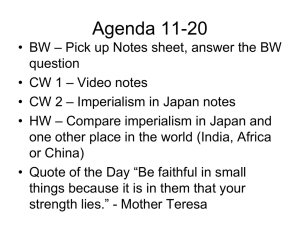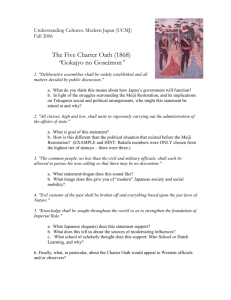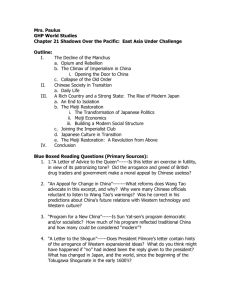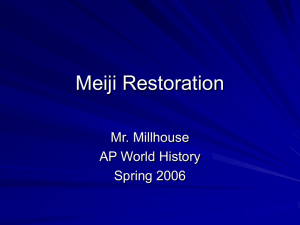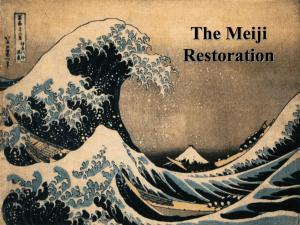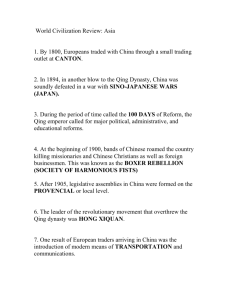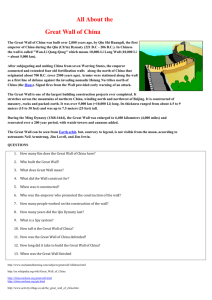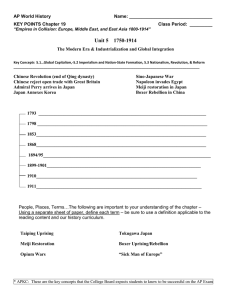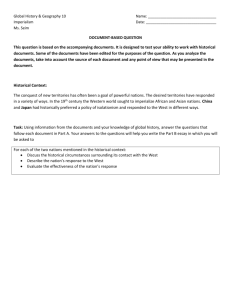Ancient History of Asia
advertisement
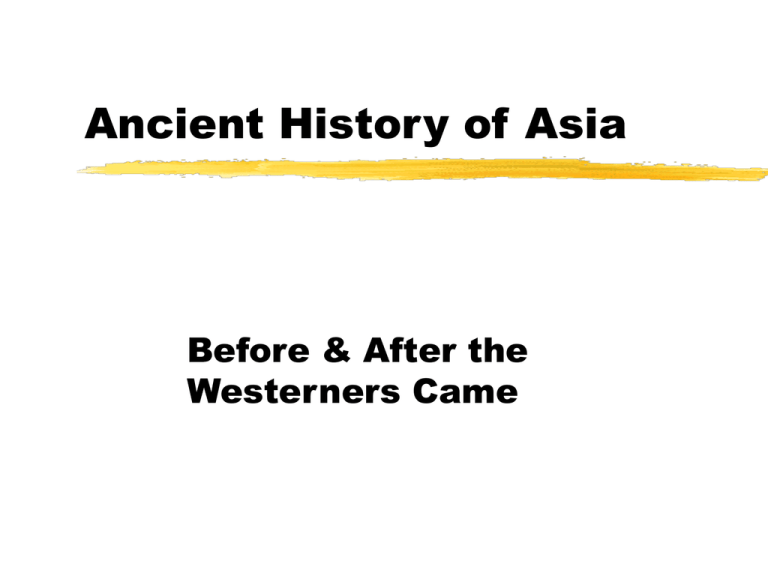
Ancient History of Asia Before & After the Westerners Came Outline Ancient civilizations in Asia Empires and dynasties Qin Dynasty tributary system After Westerners came Opium War Meiji Restoration Mesopotamia First known civilization (7,000 B.C.) Earliest cities (3,500 B.C.) Became part of the Persian Empire in 6th century B.C. Indus Valley Civilization Bronze Age culture (2500 B.C.-1700 B.C.) Cities dominated by large public buildings Invasion by Aryans from the north in 1500 B.C. Chinese Civilization Shang Dynasty (1,600 B.C. - 1,047 B.C.) 31 kings of same family weak central control written record Zhou Dyn. (1047-256 B.C.) Qin Dynasty (221-206 B.C.) Qin Shi Huang (``First Emperor of Qin”) Unification Centralized control laws, measures, currency, roads, Great Wall, thinking Later Dynasties Han (206 B.C. - 220 A.D.) Jin (265 - 420) Sui (581 - 618) Tang (618 - 907) Song (960 - 1279) Yuan (1271 - 1368) Ming (1368 - 1644) China’s Tributary System Traditional system for managing foreign relations The ``Central Kingdom” worldview Ming dynasty (1368 - 1644) had the most extensive tributary system tributes from East Asia, South Asia, Southeast Asia, and even West Asia and Africa Zheng He’s fleet (1405-33) Over 300 ships & 20,000 men trade and commerce Southeast Asia, South Asia, West Asia, and East Africa Zheng He’s expeditions Ancient Southeast Asia Buddhist kingdoms and empires trade with East and South Asia near continuous warfare invasion by Mongols in the 1300’s spread of Islam in 1400 - 1620 mosaic of small states Cause of the Opium War The Opium War (1840-42) British navy captured Hong Kong and defeated China Historic Turning Point Series of western invasions Unequal treaties with Western powers extraterritorial jurisdiction tariffs subject to approval by Western powers Shattered tributary system Exacerbated domestic crises Culminated in the fall of Qing dynasty Japan’s Meiji Restoration Similar challenges, different response Japan’s 250-year seclusion Commodore Matthew Perry’s warships entered Tokyo Bay in 1853 Western Challenges Series of treaties with Britain, France, Russia, and the Netherlands opening ports low customs duties extraterritorial jurisdiction Domestic problems Shogun (literally, ``general”) in Edo (Tokyo) controlled the Emperor in Kyoto Shogun’s government didn’t have strong central control Japan was divided into some 260 semiautonomous and mutually jealous domains Meiji Restoration - I Broke down shogun’s polity military coup Created centralized national government Used Emperor as focus of loyalty and symbol of legitimacy Incremental steps to replace the autonomous domains with prefectures Imperial Guard of 10,000 men Meiji Restoration - II Two most important constituencies: samurai and farmers samurai: privileges gradually removed farmers: land-tax reform eradicated payment in produce basis for modern capitalist economy 109 million certificates of land ownership Meiji Restoration - III Education established elementary schools universal compulsory education Military universal conscription (citizen army) Meiji Restoration - IV Meiji Constitution of 1889 limited constitutional monarchy after Bismarck’s Germany male suffrage based on property rights bicameral legislature with budgetary power Emperor’s rights, prerogatives, and power commanded the military War Minister or Navy Minister from military Self-modernization Industrialization, technological innovations, and growth of trade New Imperialist Power Japan defeated China in 1894-5 Japan defeated Russia in 1905 Theodore Roosevelt: ``if [the Japanese] win out, it may possibly mean a struggle between them and us in the future” Japan annexed Korea in 1910 Asia by World War II
